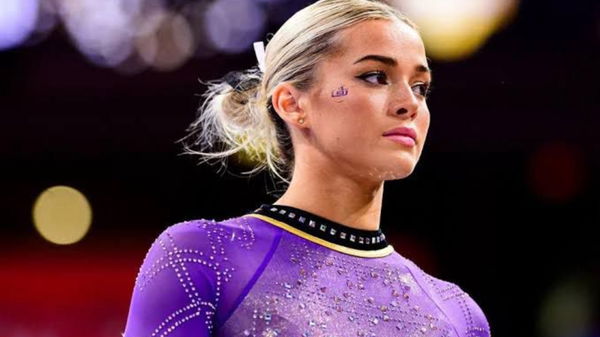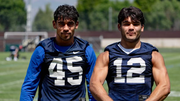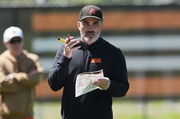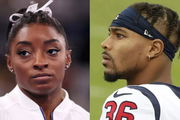
Imago
NCAA, College League, USA Womens Gymnastics: Georgia at Louisiana State Mar 7, 2025 Baton Rouge, LA, USA LSU Tigers Olivia Dunne during the meet against the Georgia Bulldogs at Maravich Center. Baton Rouge Maravich Center LA USA, EDITORIAL USE ONLY PUBLICATIONxINxGERxSUIxAUTxONLY Copyright: xStephenxLewx 20250307_ams_la1_0253

Imago
NCAA, College League, USA Womens Gymnastics: Georgia at Louisiana State Mar 7, 2025 Baton Rouge, LA, USA LSU Tigers Olivia Dunne during the meet against the Georgia Bulldogs at Maravich Center. Baton Rouge Maravich Center LA USA, EDITORIAL USE ONLY PUBLICATIONxINxGERxSUIxAUTxONLY Copyright: xStephenxLewx 20250307_ams_la1_0253
For last fifty-nine months, it was a legal tug of war—filled with twists, powerful voices, and a shifting understanding of fairness in college sports. At the heart of it all: House v. NCAA, a trio of federal antitrust lawsuits accusing the NCAA of capping what athletes could earn. Then came a rare moment on April 7. Olivia Dunne—one of the highest-profile faces of college athletics—appeared virtually during the settlement hearing to make her voice heard. Her issue wasn’t about whether athletes should be paid retroactively. It was about how. Two months later, Olivia’s plea has been heard…
Watch What’s Trending Now!
“This settlement doesn’t come close to recognizing the value I lost,” Dunne had said. She argued that the math behind the deal severely underestimated her true earning potential. Like many elite female athletes, she felt the damage pool had been sliced unfairly—and that once again, those at the top of the women’s game were being undervalued. Behind Dunne’s sharp words was a deeper truth: even in a victory, some still feel left behind.
But on Friday night, June 6, came a ruling that caught many eyeballs. Judge Claudia Wilken handed down a landmark judgment: the NCAA must pay nearly $2.8 billion in back damages over the next decade to athletes who competed from 2016 to the present. And the future? It’s rewritten. Starting in the 2025–26 season, each school will be allowed to pay its athletes, on top of scholarships and other benefits, up to a projected annual cap of $20.5 million, a figure that will rise over time. Still, for former stars like Dunne, a question lingers in the shadows: What happens to those who feel shortchanged?
ADVERTISEMENT
An answer has yet to come for athletes who feel the settlement still sells them short. But what came down from Judge Claudia Wilken is nothing short of historic—a resounding blow to outdated amateurism in major college sports. For decades, schools clung to the idea that “student-athlete” meant unpaid athlete. But behind the scenes, boosters built massive “collectives” to funnel NIL money to top recruits—essentially paying seven-figure salaries under the table, mostly for football and basketball stars. Now, that system is going legit. Under the new terms, those millions will no longer be filtered through outside groups—they’ll come straight from athletic department budgets.
One of the most dramatic changes? A formal process for NIL deals. Under the new settlement, any player offered more than $600 from a third-party sponsorship must submit the deal to a clearinghouse, operated independently by Deloitte. That group, tasked with sniffing out violations, will evaluate whether each deal passes muster. If a contract smells like a workaround to dodge the rules, it can be denied on the spot.
But this raises a new set of questions: What happens if a school pushes too hard to get a deal through? Could programs face penalties in a system where the NCAA is already grappling with weakened authority? And deeper, more foundational questions still hang in the air: Should college athletes finally be recognized as employees? How long should an athlete even be allowed to compete in college? This ruling may have rewritten the present, but the future of college sports is still very much being negotiated. However, despite Olivia Dunne’s questions remaining unanswered, there are a few who have received something.
ADVERTISEMENT
Olivia Dunne’s off day becomes memorable for many
Back in February, cracks began to show. At least 18 formal objections were filed against the NCAA’s proposed $2.8 billion settlement, and not just over money. One issue struck at the very heart of college sports: roster limits. The original deal gave the NCAA the power to cap how many athletes a team could carry—an efficiency measure, perhaps, but one with devastating potential. Thousands of student-athletes, across non-revenue sports in particular, faced the possibility of being cut, not because of talent or effort, but because of legal fine print. Judge Claudia Wilken took notice.
ADVERTISEMENT
In early April, Judge Claudia refused to approve the deal, citing serious concerns raised by athletes who feared being pushed out. Their voices mattered—and they made an impact. By late April, both sides returned to the negotiating table. The result? A key revision: no athlete would lose their roster spot solely because of the new settlement.

ADVERTISEMENT
Still, change is coming. Roster limits will be introduced, just not at the expense of current athletes. How they’ll be implemented moving forward remains unclear, but it marks a new era of college sports management—one where financial equity is no longer just about dollars, but also about who gets to suit up. So, in a battle fought over billions, the fight for a jersey still hits closest to home.
Top Stories
Footage Surfaces of Puka Nacua’s Brother Samson Slapping Fan After Arrest for Allegedly Stealing Lakers’ Adou Thiero’s SUV

Browns & Kevin Stefanski Sign Ousted Cowboys Player For Shedeur Sanders Before Week 16 Bills Game

“What Do You Come Back For?”: Tony Gonzalez’s Strong Retirement Message to Travis Kelce Amid Chiefs’ Rebuild

Carlos Alcaraz’s Split With Coach Resulted From ‘Major Disagreements’ With His Father

Controversial Crew Chief Finds Fresh Start With 17-Yo NASCAR Team

Simone Biles and Jonathan Owens Receive PETA Letter Over Pet Care Concerns

ADVERTISEMENT
ADVERTISEMENT
ADVERTISEMENT
ADVERTISEMENT

